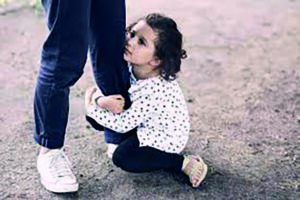 Attachment refers to the deep emotional bond that forms between an infant and their primary caregiver, typically their parent or guardian. This bond plays a crucial role in the child’s social and emotional development, influencing their sense of security, self-esteem,and ability to form healthy relationships later in life.
Attachment refers to the deep emotional bond that forms between an infant and their primary caregiver, typically their parent or guardian. This bond plays a crucial role in the child’s social and emotional development, influencing their sense of security, self-esteem,and ability to form healthy relationships later in life.
In psychology, the term, ‘attachment theory’ refers to the theory proposed by British psychologist John Bowlby, which posits that early experiences with caregivers’, shape an individual’s internal working models of relationships. This theory refers to the innate system of behaviours and emotions that infants use to maintain proximity to their caregivers, ensuring their survival and well-being. This innate system plays a fundamental role in the formation of attachment bonds and the development of secure attachment patterns. It suggests that from infancy, humans develop attachment styles based on their interactions with primary caregivers, which influence their expectations, behaviours, and emotional responses in relationships.
Understanding Attachment Theory
At the core of attachment theory is the idea that infants form an emotional bond with their primary caregivers, typically their parents or caregivers. This bond serves as a secure base from which the child can explore the world and seek comfort in times of distress. The main components of attachment include factors like ‘Proximity Maintenance’ – the desire to be near the caregiver, as it provides a sense of security and comfort, especially in times of need or distress. The caregiver’s presence allows the child to confidently explore their environment, knowing they have a secure base to return to. The child could experience ‘Separation Distress’ when separated from the caregiver, seeking to regain proximity and comfort.
Attachment Styles:
Based on early interactions with caregivers, individuals develop one of four attachment styles. The following explains each style and its impact on adult relationships:
Secure Attachment: Individuals with secure attachment styles feel comfortable with intimacy and autonomy in relationships. They trust their partners, express their needs openly, and are responsive to their partner’s needs. They feel secure in themselves and in their relationships, and can effectively navigate conflicts.
Impact On Adult Relationships: Securely attached adults are able to express their needs and emotions, fostering trust and intimacy in relationships. They prioritize open communication, mutual respect, and emotional support, leading to greater relationship satisfaction and longevity.
 Anxious-Preoccupied Attachment: These folk crave closeness and fear abandonment, often worrying about their partner’s feelings and intentions, seeking constant reassurance and validation. They may be overly dependent on their partners and experience heightened anxiety in relationships.
Anxious-Preoccupied Attachment: These folk crave closeness and fear abandonment, often worrying about their partner’s feelings and intentions, seeking constant reassurance and validation. They may be overly dependent on their partners and experience heightened anxiety in relationships.
Impact On Adult Relationships: Adults could exhibit clinginess, jealousy, and neediness in relationships. They constantly seek validation from their partners, leading to feelings of frustration and suffocation.
Dismissive-Avoidant Attachment: These people value independence and may avoid intimacy and emotional connection. They downplay the importance of relationships and prioritize self-reliance over emotional closeness. They often suppress their emotions and struggle with intimacy and vulnerability.
Impact On Adult Relationships: They struggle with intimacy and emotional vulnerability. They avoid commitment and closeness, choosing independence over connection.
Fearful-Avoidant Attachment: Also known as disorganized attachment, these individuals have conflicting desires for closeness and independence. They fear rejection and abandonment but may also push others away to protect themselves from potential hurt. They often experience intense emotional turmoil and struggle to trust others.
Impact On Adult Relationships: Adults could experience intense emotional highs and lows in relationships. They may oscillate between seeking closeness and withdrawing emotionally, creating instability and confusion for their partners.
Many individuals benefit from therapy by addressing underlying insecurities and unresolved trauma to develop healthier coping mechanisms, or by exploring their emotional barriers to develop more secure attachment patterns.
Coping Mechanisms And Developing Secure Attachment:
While attachment styles are rooted in early experiences, it is possible to develop a more secure attachment style through self-awareness, therapy, and conscious effort. Some coping mechanisms to foster secure attachment include:
Mindfulness and Self-Reflection: Practice self-awareness to identify attachment patterns and triggers in relationships. Reflect on past experiences and their impact on your attachment style.
Effective Communication: Foster open, honest communication with your partner. Express your needs, feelings, and boundaries clearly, and listen actively to your partner’s perspective.
Emotional Regulation: Develop healthy coping mechanisms for managing stress, anxiety and conflict in relationships. Practice self-soothing techniques such as deep breathing, meditation, or journaling.
Building Trust: Cultivate trust and reliability in your relationships by being consistent, dependable, and responsive to your partner’s needs.
Seeking Support: Consider individual or couples’ therapy to explore attachment patterns, address underlying insecurities, and develop healthier relationship dynamics.
By understanding attachment theory and its implications for adult relationships, individuals can work towards cultivating more secure, fulfilling connections with their partners based on trust, intimacy, and mutual respect. Through self-awareness, emotional regulation, and effective communication, it is possible to overcome attachment insecurities and foster healthier attachment patterns in relationships.
- Gift Yourself A Mental Detox On Navroz! - 15 March2025
- The Food And Mood Connect: Eating Your Way To A Healthier Mind - 1 March2025
- Beating The ‘Cascade Effect’ In 2025 - 28 December2024
